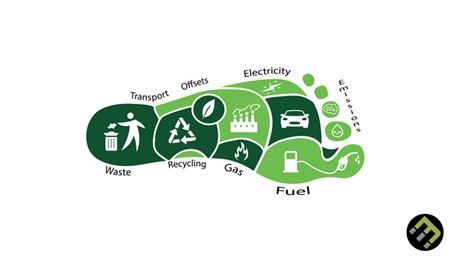The carbon footprint is a concept used to quantitatively determine the impact of a particular activity, individual, or country on climate change. The carbon footprint indicates how much a given entity (or product) affects the environment by releasing greenhouse gases (GHGs) into the atmosphere. Greenhouse gases, besides carbon dioxide, also include methane, nitrous oxide, and other gaseous components of the atmosphere participating in the so-called greenhouse effect. As a result of their actions, the Earth’s temperature rises, leading to observable consequences such as droughts, wildfires, soil erosion, loss of biodiversity, etc. Greenhouse gases are produced both through natural processes and as a result of human activities, and in themselves, they are not inherently harmful. Unfortunately, due to intense economic activities, including agriculture, the level of their emissions becomes dangerously high, and it is essential to limit it. Otherwise, our planet faces the threat of destruction.
The measure of the carbon footprint is tCO2e: a ton of carbon dioxide equivalent per functional unit of a product (CO2e/functional unit). This is a standardized measure widely accepted as a way to describe the adverse impact of a particular unit on global warming. The carbon footprint can be measured for both companies and organizations, as well as products. In the former case, the carbon footprint is determined on an annual basis, while in the latter case, it is related to the entire life cycle of the product. There are many norms and standards concerning the carbon footprint. The most well-known among them are GHG Protocol, ISO 14064 (for organizations), and ISO 14067 (for products).
The most emission-intensive sectors of the economy overall include energy, transportation, and food production (approximately one-third of this value). In the European Union, according to the latest data [1], in the first quarter of 2023, the largest carbon footprint was generated by households (24%), industrial production (20%), electricity production and gas supply (19%), agriculture (13%), and transportation and storage (10%). The global perspective looks somewhat different, and estimates can vary widely. According to the research agency Rhodium Group [2], the last year for which detailed sectoral information is available due to data accessibility is 2020. The largest global GHG emitter (31%) remains the industrial sector, including iron and steel production, natural gas and oil extraction, cement, chemicals, and coal, while 28% comes from electricity production (including coal, gas, and oil), 18% from agriculture and food production, 17% from transportation, and 7% from construction.
According to the Intergovernmental Panel on Climate Change (IPCC), the overall food system is responsible for about 30% of global greenhouse gas emissions from human activities.
On a global scale, the average carbon footprint is around 4 tons. To have the best chance of avoiding a 2°C increase in global temperatures, the average annual global carbon footprint must fall below 2 tons by 2050. Reducing individual carbon footprints will not happen overnight! By making small changes in our actions, such as consuming less meat, using fewer connecting flights, and air-drying clothes, we can start making significant changes [3].
Here are some essential tips to reduce your carbon footprint [4]:
Food
- Eat local and seasonal products.
- Limit meat consumption, especially beef.
- Choose fish from sustainable fisheries.
- Bring reusable bags when shopping and avoid excessively plastic-packaged products. –
- Buy only what you need to prevent food waste.
Clothing
- Take care of your clothes.
- Exchange or borrow clothes with others, or buy used ones.
- Purchase clothes produced responsibly, such as those made from recycled materials or with eco-friendly labels.
Transportation
- Use a bicycle or public transportation.
- Consider when and how you use your car.
- Try taking the train for your next vacation.
Energy and Waste
- Lower the heating temperature by 1°C; even a small change can make a difference.
- Take shorter showers.
- Turn off the water when brushing your teeth or washing dishes.
- Turn off electronic devices and unplug your phone once it’s fully charged.
- Avoid storing unnecessary data in the cloud.
- Choose energy-efficient products with an “A” rating. – Reduce and sort your waste.



